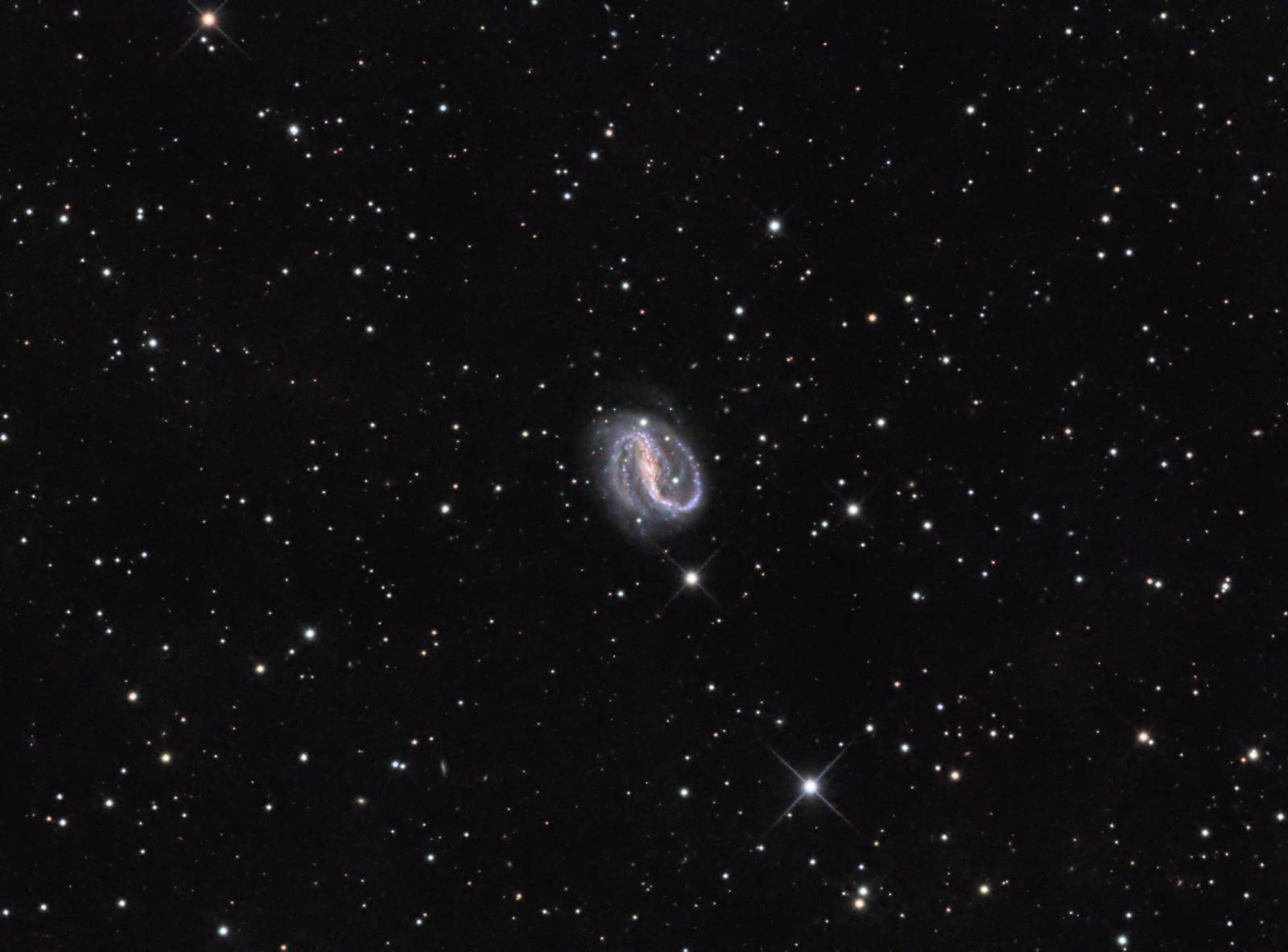NGC7479
 Click image for full size version
Click image for full size version
January 26, 2017
NGC7479 is a pretty little barred-spiral galaxy in Pegasus. This was a challenge object for my imaging equipment, because the galaxy was very small for my field of view. This is partly because of its great distance, at 105 million light years. NGC74749 is undergoing a burst of star-forming activity in the spiral arms and in the core. Knots of star clusters (blue) and nebulae (pink) are visible. I could have cropped this image more closely, but chose to leave a wide field to capture the many other galaxies in this section of sky, some even further away. This data was acquired in December 2013, but I wasn’t happy with the processing at that time. With new techniques and lots of practice, I reprocessed this over the last few days, and feel it is finally ready for prime time. Enjoy!
Tekkies:
SBIG STL-11000M camera, Baader LRGB filters, 10″ f/6.8 ASA astrograph, Paramount MX. Guided with STL-11000’s internal guider. Focused with FocusMax. Acquistion, guiding and calibrationwith Maxim-DL. All other processing in PixInsight. Shot from my SkyShed in Guelph, Ontario. No moon. Average to very good transparency and good seeing, but patchy. Acquired over 7 nights (phew!)
15x10m L, and 7x10m R and G and 6x10m B unbinned frames (total=5hr50m).
RGB
Creation and cleanup: L, R, G and B masters were cropped and processed separately with DBE. R, G and B were combined to make an RGB image which was processed with ColorCalibration.
Linear Noise Reduction: MultiscaleLinearTransform was used to reduce noise in the background areas. Layer settings for threshold and strength: Layer 1: 3.0, 0.75 Layer 2: 2.0, 0.62 Layer 3: 1.0, 0.5 Layer 4: 0.5, 0.2, Layer 5: 0.5, 0.1
Stretching: HistogramTransformation was applied to make a pleasing yet bright image. During stretching, it was noted that the colours were not properly balanced for the background, so this was adjusted manually using sliders for the individual colour channels, as well as the RGB/K slider.
Synthetic Luminance:
Creation and cleanup of SynthL: The cleaned up L, R, G and B masters were combined using the ImageIntegration tool (average, additive with scaling, noise evaluation, iterative K-sigma / biweight midvariance, no pixel rejection).
Deconvolution: A copy of the image was stretched to use as a deconvolution mask. A star mask was made from unstretched SynthL to use as a local deringing support. Deconvolution was applied (80 iterations, regularized Richardson-Lucy, external PSF made using DynamicPSF tool with 25stars; local deringing at 85% and global dark deringing at 0.02).
Linear Noise Reduction: MultiscaleLinearTransform was applied to reduce the noise. Layer settings for threshold and strength: Layer 1: 3.0, 0.85 Layer 2: 2.0, 0.7 Layer 3: 1.0, 0.5 Layer 4: 0.5, 0.5, Layer 5: 0.5, 0.5
Stretching: HistogramTransformation was applied to make a pleasing yet bright image.
Nonlinear Noise Reduction: TGVDenoise was applied and the image was re-stretched to reset the black point.
Combining SynthL with RGB:
The luminance channel of the RGB image was applied with LRGBCombine to make a SynthLRGB image. Colour noise reduction was used and the chrominance slider was decreased to 0.4.
Final Processing of SynthLRGB:
MultiscaleMedianTransform was applied in Median-Wavelet Transform mode to sharpen the brightest parts of the galaxies (bias +0.1 for layers 2 and 3, and bias +0.06 for layer 4), protecting background and stars with a mask.
Background, stars and galaxy brightness, contrast and saturation were adjusted in several iterations using Curves with masks as required.
Image scale is about 1.1 arcsec per pixel for this camera / telescope combination.






Very exciting photography and processing.